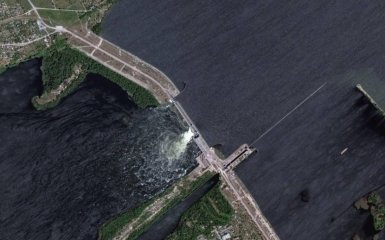The main water pipeline to the towns affected by Russia's actions that blew up the Kakhovka HPP dam is 87% complete.
How the water pipeline is being laid after the Kakhovka HPP explosion
The State Agency for Reconstruction and Development of Infrastructure continues construction of the Karachunivske Reservoir - Kryvyi Rih - Pivdenne Reservoir, Marhanets - Nikopol, Khortytsia (DWSS2) - Tomakivka water pipeline.
It will be able to pass 550,000 cubic metres of water per day, which will help provide water to more than a million people in the communities affected by the explosion of the Kakhovka HPP.
The water supply system will be 145 kilometres long. Currently, work is underway at 11 pumping stations, with 1,250 people working around the clock in three shifts at the construction site.
At this stage, foundations are installed, walls are waterproofed, pumps are installed, and walls are reinforced.
Roofing works and installation of automated systems will be completed in the near future.
What is known about the explosion at Kakhovka HPP
Russian occupants blew up the Kakhovka hydroelectric power plant on the night of 6 June. Ukrhydroenergo, a Ukrainian state-owned enterprise that administers many major hydro power plants, reported that the Kakhovka HPP is not subject to restoration. The explosion led to flooding in Mykolaiv and Kherson regions, including the occupied territories.
According to the Ministry of Internal Affairs, 31 people died as a result of the destruction of the Kakhovka hydroelectric power plant. The occupiers claimed 55 deaths on the seized lands of the Kherson region, but did not allow international humanitarian organisations to enter.
Following the destruction of the Kakhovka HPP dam, 180 settlements in the Kherson, Dnipro and Mykolaiv regions, home to almost 900,000 people, were put in an emergency zone.
Almost 700,000 Ukrainians were left without access to drinking water. To meet the needs of the population and prevent outbreaks of infectious diseases, 148,000 tonnes of drinking and process water were delivered to the emergency zone.
Experts from the Ukrainian Hydrometeorological Institute concluded that the Kakhovka reservoir no longer exists.

